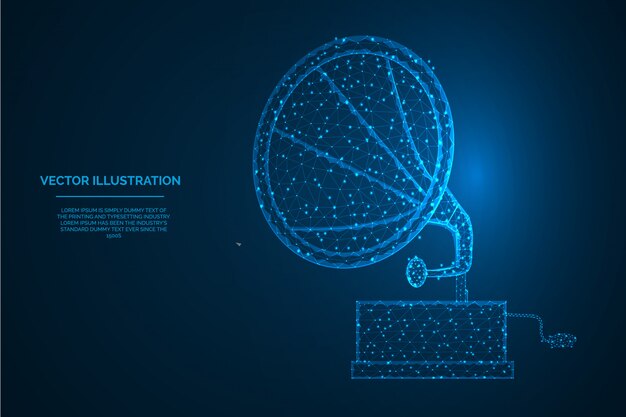Cybersecurity Guide: Mastering Vulnerability Management

A cybersecurity guide on vulnerability management is paramount for identifying, classifying, remediating, and mitigating vulnerabilities, ensuring an organization’s assets are protected from cyber threats and data breaches.
In today’s digital age, cybersecurity threats are becoming increasingly sophisticated, making robust vulnerability management essential. This cybersecurity guide: vulnerability management will walk you through the crucial steps of identifying, classifying, and mitigating these vulnerabilities, safeguarding your organization’s valuable assets from potential cyberattacks.
Understanding Vulnerability Management
Vulnerability management is more than just scanning for weaknesses; it’s a continuous, proactive process. It involves not only identifying potential flaws but also assessing their impact and taking appropriate steps to remediate or mitigate them.
By implementing a comprehensive vulnerability management program, organizations can significantly reduce their attack surface, stay ahead of emerging threats, and ensure the confidentiality, integrity, and availability of their data.
Key Components of Vulnerability Management
A successful vulnerability management program encompasses several key components, each playing a vital role in the overall security posture.
- Asset Discovery: Identifying all assets within the organization’s environment, including hardware, software, and cloud services.
- Vulnerability Scanning: Regularly scanning these assets for known vulnerabilities using automated tools.
- Vulnerability Assessment: Analyzing the scan results to prioritize vulnerabilities based on their severity and potential impact.
- Remediation: Taking action to fix or mitigate the identified vulnerabilities.
These components work together to create a holistic approach to managing vulnerabilities, ensuring that organizations are constantly aware of their security weaknesses and taking steps to address them.
In essence, vulnerability management is about understanding your weaknesses and proactively addressing them before they can be exploited.
The Vulnerability Management Lifecycle
The vulnerability management lifecycle provides a structured approach to identifying, assessing, and mitigating vulnerabilities. This cyclical process ensures continuous improvement and adaptation to evolving threats.
Each stage of the lifecycle is crucial for maintaining a strong security posture and reducing the risk of successful cyberattacks.
Stages of the Vulnerability Management Lifecycle
The vulnerability management lifecycle typically consists of the following stages:
- Identification: Discovering vulnerabilities through scanning and other methods.
- Assessment: Evaluating the severity and potential impact of identified vulnerabilities.
- Remediation: Implementing solutions to fix or mitigate vulnerabilities.
- Verification: Validating that the remediation efforts were effective.
By following this lifecycle, organizations can ensure that vulnerabilities are effectively managed from discovery to resolution, minimizing the risk of exploitation.
Regularly revisiting each stage is essential to adapt to new threats and maintain a robust security posture.
Identifying Vulnerabilities: Tools and Techniques
Identifying vulnerabilities is the first crucial step in the vulnerability management process. Accurate and timely identification depends on using the right tools and techniques.
Effective vulnerability identification provides the foundation for subsequent assessment and remediation efforts.
Common Vulnerability Scanning Tools
Numerous vulnerability scanning tools are available, each with its own strengths and weaknesses. Some popular options include:
- Nessus: A widely used vulnerability scanner known for its comprehensive vulnerability database.
- Qualys: A cloud-based vulnerability management platform offering a wide range of security services.
- OpenVAS: An open-source vulnerability scanner that is a cost-effective alternative to commercial tools.
These tools automate the process of scanning systems and applications for known vulnerabilities, providing valuable insights into potential security weaknesses.
Choosing the right tool depends on the specific needs and requirements of the organization.
Beyond automated scanning tools, techniques like penetration testing and manual code reviews can also uncover vulnerabilities that automated tools might miss.
Assessing Vulnerability Risk: Prioritization Strategies
Once vulnerabilities are identified, it’s crucial to assess their associated risk. Not all vulnerabilities are created equal; some pose a greater threat than others.
Effective risk assessment allows organizations to prioritize remediation efforts, focusing on the most critical vulnerabilities first.
Factors Influencing Vulnerability Risk
Several factors influence the overall risk associated with a particular vulnerability:
- Severity: The potential impact of a successful exploit, ranging from minor disruption to complete system compromise.
- Exploitability: How easy it is for an attacker to exploit the vulnerability.
- Asset Value: The value of the assets that could be affected by the vulnerability.
By considering these factors, organizations can accurately assess the risk posed by each vulnerability and prioritize their remediation efforts accordingly.
Ignoring these factors can lead to misallocation of resources and increased risk of successful attacks.
Mitigating Vulnerabilities: Remediation Techniques
Mitigating vulnerabilities is the core of vulnerability management. This involves taking action to reduce or eliminate the risk associated with identified vulnerabilities.
Remediation techniques vary depending on the nature of the vulnerability and the specific context of the affected system.
Common Remediation Strategies
Some common remediation strategies include:
- Patching: Applying software updates to fix known vulnerabilities.
- Configuration Changes: Modifying system configurations to reduce the attack surface.
- Workarounds: Implementing temporary solutions to mitigate vulnerabilities until a permanent fix is available.
Choosing the right remediation strategy depends on the specific vulnerability and the organization’s tolerance for risk.
Maintaining a Proactive Vulnerability Management Program
Vulnerability management is not a one-time task; it’s an ongoing process. Maintaining a proactive program requires continuous monitoring, assessment, and improvement.
A proactive approach ensures that organizations stay ahead of emerging threats and maintain a strong security posture.
Continuous Improvement and Adaptation
To maintain a proactive vulnerability management program, organizations should:
- Regularly Review and Update Policies: Ensure that vulnerability management policies are up-to-date and aligned with the organization’s security goals.
- Monitor for New Vulnerabilities: Stay informed about emerging threats and vulnerabilities by subscribing to security advisories and participating in industry forums.
- Continuously Improve Processes: Identify areas for improvement in the vulnerability management process and implement changes to enhance its effectiveness.
By embracing continuous improvement and adaptation, organizations can ensure that their vulnerability management program remains effective in the face of evolving threats.
| Key Aspect | Brief Description |
|---|---|
| 🛡️ Asset Discovery | Identifying all hardware, software, and cloud services. |
| 🔍 Vulnerability Scanning | Regularly scanning assets for known vulnerabilities. |
| ❗ Risk Assessment | Prioritizing vulnerabilities based on severity and impact. |
| 🛠️ Remediation | Taking action to fix or mitigate identified vulnerabilities. |
Manage Vulnerability: Frequently Asked Questions
▼
The primary goal is to reduce the risk of cyberattacks by identifying, assessing, and mitigating vulnerabilities in an organization’s systems and applications.
▼
Vulnerability scans should be conducted regularly, ideally on a weekly or monthly basis, depending on the organization’s risk tolerance and the rate of change in its IT environment.
▼
Common techniques include patching software, modifying system configurations, implementing workarounds, and in some cases, replacing vulnerable systems or applications.
▼
Prioritize based on factors like severity, exploitability, asset value, and potential impact. Focus on critical vulnerabilities that pose the greatest risk to the organization.
▼
Continuous monitoring ensures that organizations stay aware of new threats and vulnerabilities, allowing them to proactively respond and maintain a strong security posture over time.
Conclusion
In conclusion, effective vulnerability management is a critical component of any organization’s cybersecurity strategy. By implementing a comprehensive program that encompasses identification, assessment, mitigation, and continuous improvement, organizations can significantly reduce their risk of cyberattacks and protect their valuable assets.





